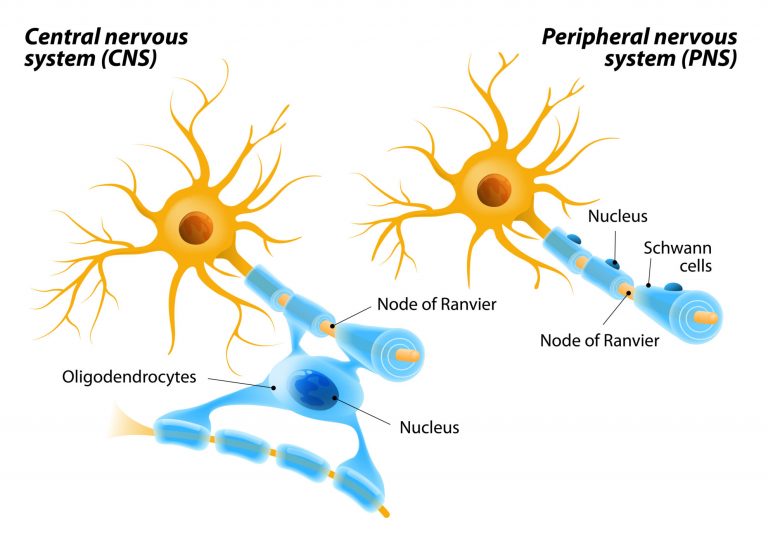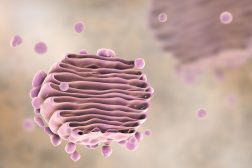The Central Nervous System

Oligodendrocytes in the central nervous system (unlike the Schwann cells in the peripheral nervous system) form segments of myelin sheaths of numerous neurons at once.
Myelin Sheath
Myelin is a substance that forms the myelin sheath associated with nerve cells. This sheath is a layer of phospholipids that increases the conductivity of the electrical messages that are sent through the cell. Diseases such as multiple sclerosis are a result in a lack of this myelin sheath, with the effect is that the conductivity of signals is much slower severely decreasing the effectiveness of the nervous system in sufferers.
In total, there are 43 main nerves that branch off the Central nervous system (CNS) to the peripheral nervous system. (The peripheral nervous system is the nervous system outside the CNS.) These are the efferent neurons that carry signals away from the CNS to the peripheral system.
Somatic Nervous System
These efferent fibers are divided into the somatic nervous system and the autonomic nervous system. The somatic fibers are responsible for the voluntary movement of our body, i.e. movement that you consciously thought about doing.
Autonomic Nervous System
The autonomic nervous system incorporates all the impulses that are done involuntarily, and are usually associated with essential functions such as breathing, heartbeat, etc. However, this type of system can further be broken down into the sympathetic and parasympathetic systems which keep one another in check in a form of negative feedback such as the release of insulin and glucagon in sugar control of the blood.
All of the actions executed by the autonomic nervous system are unconsciously done.
These informational pulses executed in our nervous system allow us to do our daily functions. The processing of this information is done in the CNS, the brain, a highly developed mass of nerve cells. The inner workings of the brain are investigated on the next tutorial, Types and Causes of Brain Damage.
You have utilized all of your attempts to pass this quiz.
You will also like...

Origins of Life on Earth
Earth was created around 4.5 billion years ago and life began not long after. Primitive life likely possessed the elemen..

IQ, Creativity and Learning
Human intelligence provided the means to utilize abstract ideas and implement reasoning. This tutorial takes a further l..

Role of Golgi Apparatus & Endoplasmic Reticulum in Protein Synthesis
The endoplasmic reticulum and Golgi apparatus are the organelles involved in the translation step of protein synthesis a..

Pollution in Freshwater Ecosystems
There are many environmental factors that arise due to the usage of water in one way or another and for every action tha..

Plant Cells vs. Animal Cells
Plant cells have plastids essential in photosynthesis. They also have an additional layer called cell wall on their cell..

Stems
Stems primarily provide plants structural support. This tutorial includes lectures on the external form of a woody twig ..
